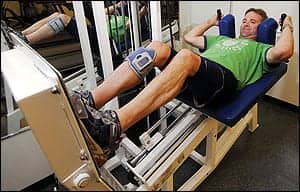When it comes to rehabilitation post-spinal cord injury, the earlier it is begun the better, according to recent research.
The research, presented recently at the Association of Academic Physiatrists Annual Meeting in Sacramento, Calif, suggests that rehabilitation begun as early as possible after a spinal cord injury may help lead to better functional outcomes when the patient is discharged and in the year afterward.
In the study, researchers from Johns Hopkins University, the University of Alabama at Birmingham, and Northwestern University examined patients’ outcomes after being discharged from rehabilitation as well as 1 year after their injury to determine if earlier rehabilitation can positively affect those outcomes when compared to rehabilitation later in the recovery process, explains a media release from the Association of Academic Physiatrists.
“In other areas of medicine, we tend to recognize that the time between an acute health event and treatment matters,” explains the study’s lead researcher, Kurt Herzer, MSc; a fellow in the Medical Scientist Training Program at Johns Hopkins School of Medicine, in the release.
“For example, many patients are familiar with the adage that ‘time is muscle’ following a heart attack, and that delays in treatment increase the likelihood of damage to the heart. Our study is interested in a similar type of relationship between time and outcomes, but extending to the post-acute care setting—the time from spinal cord injury to rehabilitation.”
Herzer and his team looked at data for 3,937 people who sustained a traumatic spinal cord injury between the years of 2000 and 2014. On average, the patients were white males, 41.5 years old at the time of their injury, and were admitted to a facility within 24 hours of sustaining the injury. Nearly 17% of the patients had the most severe level of spinal cord injury (C1-C4), which includes paralysis in the hands, arms, trunk, and legs.
The researchers looked at the number of days between the injury and admission to inpatient rehabilitation. They also looked at various measures to evaluate each patient’s outcome. These included the Functional Independence Measure (called FIM) motor score — which assesses physical disability — at discharge and one-year post injury; discharge to a private residence; and the Craig Handicap Assessment and Reporting Technique (called CHART) to assess physical independence and mobility at one-year post injury, the release explains.
The researchers took into account the severity of the patient’s injury, as well as Medicare data for the patient’s location to determine the medical provider’s likelihood of using acute care more or less aggressively regardless of patients’ health statuses, when reviewing the data.
Ultimately, Herzer’s team found that, for patients suffering from spinal cord injuries, earlier rehabilitation was associated with modest improvements in functioning and physical independence. More specifically, they found the average time to rehabilitation was 19 days during the time period studied.
When they accounted for patients’ health statuses, they found a 10% greater time to rehabilitation was associated with a relative decline of 4% in the FIM motor score and 5.3% in the CHART physical independence score at 1 year postinjury. Finally, they found no association between longer time to rehabilitation and the likelihood of being discharged to a private residence, 1-year FIM motor score or the CHART mobility score, the release continues.
“This study shows, following spinal cord injury, patients might benefit from entering inpatient rehabilitation at the earliest, clinically appropriate opportunity,” Herzer states regarding the results, in the release.
[Source(s): Association of Academic Physiatrists, Science Daily]





